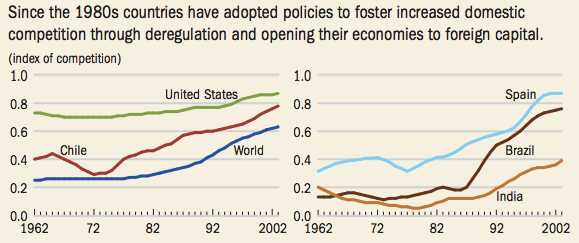Ahmedabad
(Head Office)Address : 506, 3rd EYE THREE (III), Opp. Induben Khakhrawala, Girish Cold Drink Cross Road, CG Road, Navrangpura, Ahmedabad, 380009.
Mobile : 8469231587 / 9586028957
Telephone : 079-40098991
E-mail: dics.upsc@gmail.com

New Washington Consensus
News: The recent initiatives taken by the US president Joe Biden are being dubbed as efforts to build “New Washington Consensus”.
What is Washington Consensus?
It refers to a set of broadly free market economic ideas, supported by prominent economists and international organizations, such as the IMF, the World Bank, the EU and the US.
It reduced the government’s role in the economy and pushed a free-market agenda of deregulation, privatization, and trade liberalization, floating exchange rates and macroeconomic stability.
What are the principles of Washington Consensus?
Low government borrowing, Redirection of public spending from subsidies toward broad-based provision of key pro-growth, Tax reform, Positive Interest rate, Competitive exchange rates, trade liberalization, Liberalization of inward foreign direct investment, Privatization of state enterprises. Deregulation and Legal security for property rights.
What were the issues highlighted with old Washington Consensus?
The older approach that markets know best led to the hollowing out of the US industrial base. Its promise that deep liberalization would help American export goods remained unfulfilled.
Earlier idea was that brining China into the WTO in 2001 would incentivize the nation to adhere to its rules and policies of WTO. But, economic integration didn’t stop china from expanding its military ambitions in the region.
Earlier notion that all growth was good growth led to the privileging of some sectors like finance “while other essential sectors, like semiconductors and infrastructure, were at disadvantage”. Under the old Washington Consensus, US industrial capacity took a real hit.
What are the solutions?
Return to industrial policy that was the hallmark of US economic development historically, but dismissedby economic neoliberalism in the last few decades. The US has been pumping investments into semiconductor production and promoting the development and deployment of green technologies.
Develop a joint effort with US allies and partners, including India. Pursue industrial strategy at home and not leave friends behind.
The focus should be on developing diversified and resilient supply chains and ensuing trust in the massive infrastructure.
The US should mobilize “trillions in investment into emerging economies — with solutions that those countries are fashioning on their own, but with capital enabled by a different brand” of US economic diplomacy.
US should focus on offering an alternative to China’s Belt and Road Initiative, it must address the impending global debt crisis and reform multilateral development banks.

Address : 506, 3rd EYE THREE (III), Opp. Induben Khakhrawala, Girish Cold Drink Cross Road, CG Road, Navrangpura, Ahmedabad, 380009.
Mobile : 8469231587 / 9586028957
Telephone : 079-40098991
E-mail: dics.upsc@gmail.com
Address: A-306, The Landmark, Urjanagar-1, Opp. Spicy Street, Kudasan – Por Road, Kudasan, Gandhinagar – 382421
Mobile : 9723832444 / 9723932444
E-mail: dics.gnagar@gmail.com
Address: 2nd Floor, 9 Shivali Society, L&T Circle, opp. Ratri Bazar, Karelibaugh, Vadodara, 390018
Mobile : 9725692037 / 9725692054
E-mail: dics.vadodara@gmail.com
Address: 403, Raj Victoria, Opp. Pal Walkway, Near Galaxy Circle, Pal, Surat-394510
Mobile : 8401031583 / 8401031587
E-mail: dics.surat@gmail.com
Address: 303,305 K 158 Complex Above Magson, Sindhubhavan Road Ahmedabad-380059
Mobile : 9974751177 / 8469231587
E-mail: dicssbr@gmail.com
Address: 57/17, 2nd Floor, Old Rajinder Nagar Market, Bada Bazaar Marg, Delhi-60
Mobile : 9104830862 / 9104830865
E-mail: dics.newdelhi@gmail.com